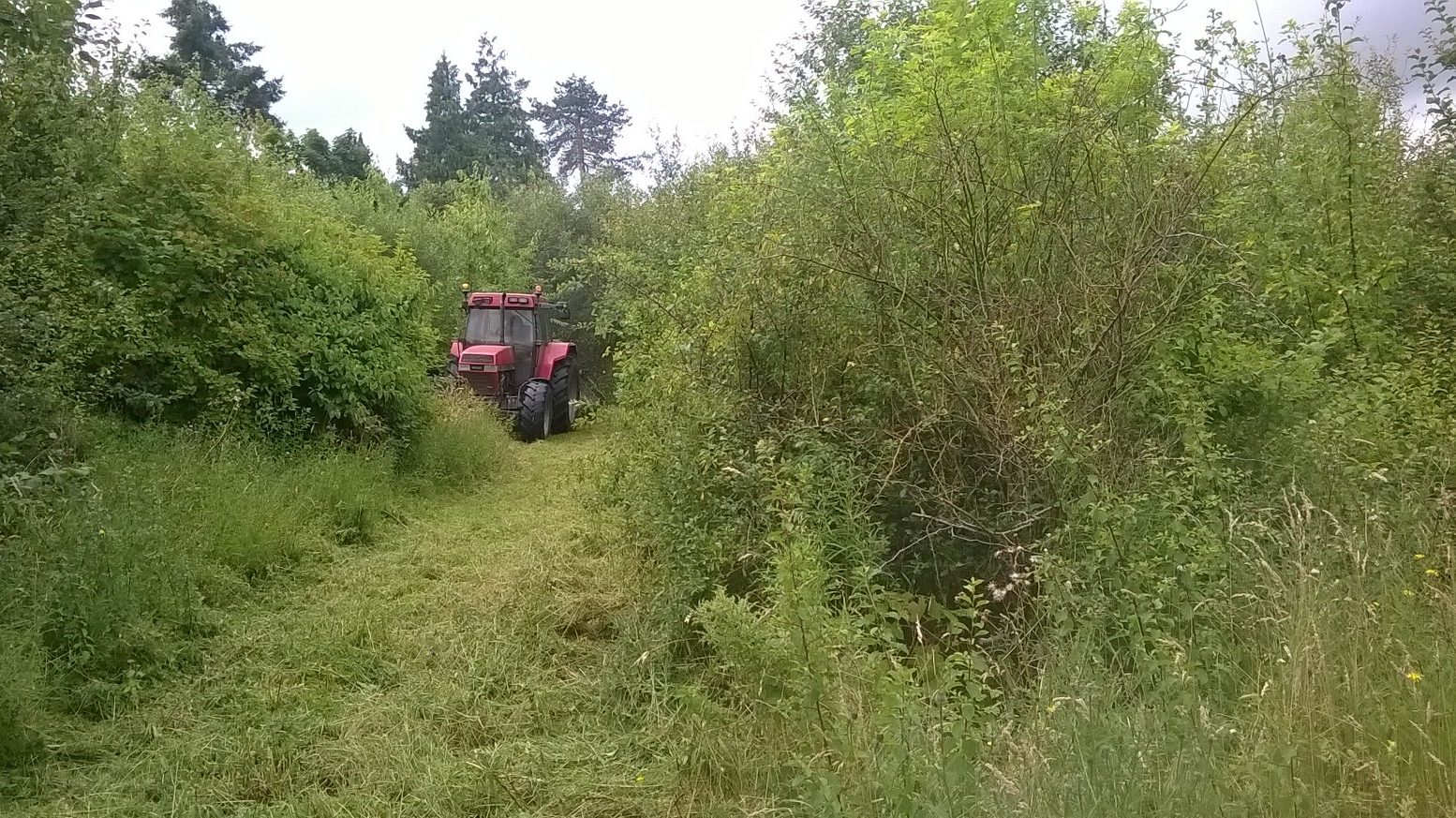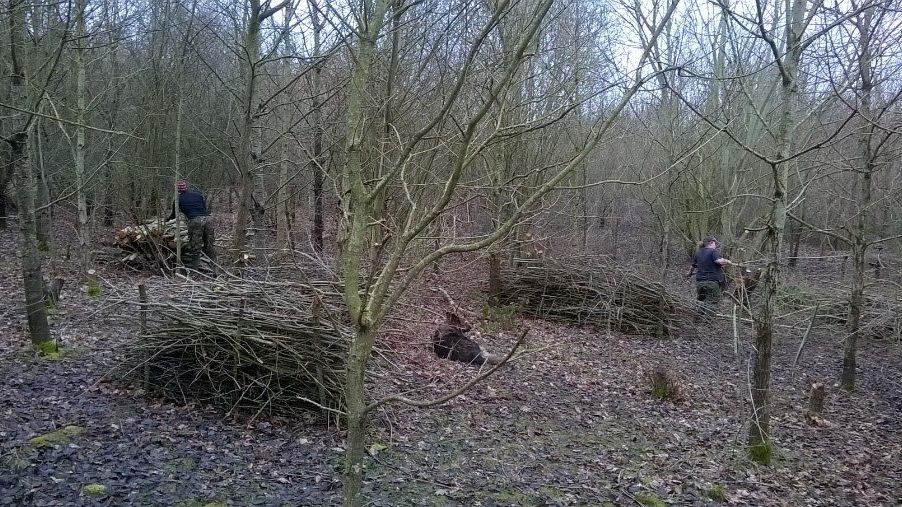Lot 3 Creating Woodland on Arable Land
In 2019, Lot 3 won the RFS Small and Farm Woodland Excellence in Forestry Award for its woodland and wildflower meadows

Lot 3, Hinksey Hill, Oxford
This 4ha wood has been planted on former corn fields which had been under agricultural production for several centuries – a 1th century painting by William Turner shows people bundling wheat sheaves on the land.
When owner Riki Therivel bought the land at auction in 2003 via a sealed bid, she did so because she wanted space for biodiversity, education and fun.
Initial thoughts of farming goats, pumpkin fields and birdseed were rejected in favour of a woodland and wildflower meadows.
In 2019, Lot 3 won the RFS Small and Farm Woodland Excellence in Forestry Award.
Tree Planting
Soils vary across the land, but include some heavy clays. The wood itself is bound on one long edge by a road, on two short sides by houses and on the other long edge by the garden of a very large house which then becomes woodland.
With the aid of a Forestry Commission woodland grant 7,000 trees, 2200 each of oak and ash and another 2600 whips including hazel and crabapple were planted in January and February 2003. Around 20% of the site is managed as a wildflower meadow.
The management objectives are:
- Manage oak and ash for high-quality timber
- Manage hazel plantation for coppicing
- Manage rides and open ground for views and access
Ongoing management
The initial management plan covered tree planting and managing rides and glades.
Deer-proof fencing was put up –but has not managed to prevent all deer from accessing the woodland. To date, grey squirrels have not caused any damage.
Early years management involved a lot of pulling rape; more recently Travellers Joy -Old Man’s Beard-has had to be controlled.
A farmer mows the rides annually, but the owner scythes about an acre of meadow every year and was helped in that for many years by the Witney Conservation Volunteers.
In the last two years, she has started thinning trees, with a focus on keeping the best trees.
Opening up the woodland
Although it is a private woodland, the owner opens it to the public, and lots of people are involved in managing it.
Local workers and residents walk around it and a friend keeps bees there.
The woodland hosts: a number of educational and woodland management activities including:
- Forest Schools
- Bushcraft classes – for young people facing a number of challenges
- Hands on coppicing–encouraging those buying coppice to have a go and help with the woodland management –an opportunity taken up by around 25% of customers
Woodlots
For the last two years, there have been three ‘woodfuel allotments’ in the wood, as a way of helping to thin the trees and manage the woodland.
The owner marks out trees that need thinning, and allotment owners have a year in which to fell them; during that year they can also picnic, camp etc. in the woodland.
Currently, one family is homeschooling their child on one allotment, and two archery instructors are using the ash on their allotment to teach bow-making classes.
“Lot 3 Wood shows just what can be achieved in an amazingly short time by an enthusiastic and energetic woodland owner.” – Excellence in Forestry judges
Ash dieback
Many of the larger ash trees planted in 2003 have fallen victim to ash dieback and are dead and dying. The great majority of those that had self-seeded have also perished.
The owner has been felling ash trees as they succumb to ash dieback, making use of the timber for fencing around her own home. Isolated trees in the wildflower meadows and those that appear to be tolerant are being retained in the hope they may become part of a disease-resistant gene pool.
Biodiversity
Over time, orchids – common spotted and pyramidal – have appeared, as have bluebells, ferns and various fungi.
Butterflies use the open spaces, and there are lots of birds.
The woodland is regularly visited by foxes, badgers and green woodpeckers as well as less welcome deer.
Making it pay
For the past nine years, the owner has run a very small hazel and willow coppicing business (400-2000 sticks per year) from the woodland.
Coppicinghas paid for the on-going woodland management -the insurance, mowing of rides, some chainsawing of large willows, purchase of tools and the construction of a lean-to shed about eight years ago.
Forestry Commission funding paid for half of the deer/rabbit fencing and half of the tree whips
Thanks to volunteer labour, the wood makes about £600-£1200 per year but does not begin to repay original purchase costs.
More information: https://therivel.wordpress.com/lot-3-wood/


